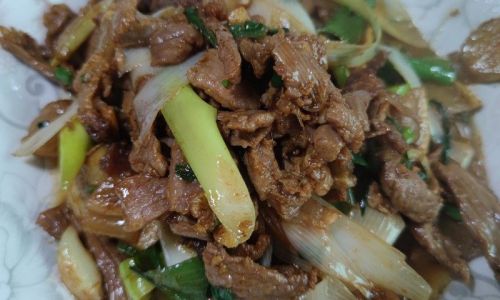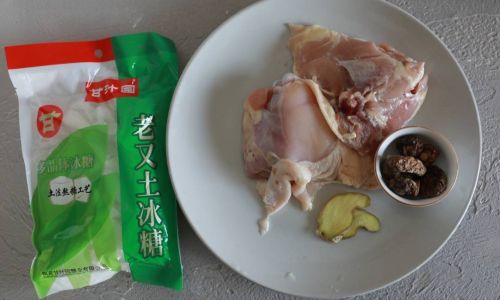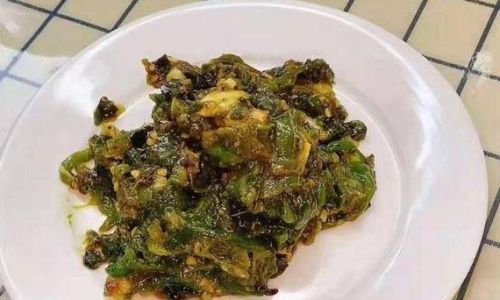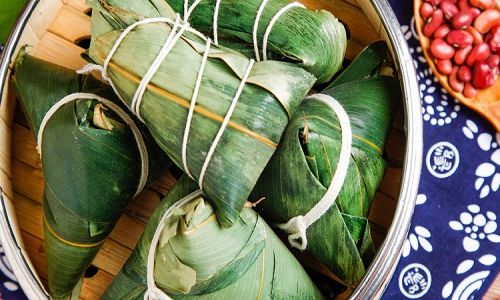Stir-fried dishes are the heartbeat of many cuisines, blending vibrant colors, contrasting textures, and bold flavors into a single harmonious plate. Among these, the combination of duck gizzards and green onions stands out as a testament to culinary ingenuity. This dish, rooted in traditional Chinese cooking techniques, has transcended borders to become a beloved staple in kitchens worldwide. Its appeal lies in the marriage of chewy, tender duck gizzards and the crisp, aromatic freshness of green onions, all united by a glossy, umami-rich sauce. In this comprehensive guide, we will explore the art of preparing stir-fried duck gizzards with green onions, from selecting the finest ingredients to mastering the stove’s heat. Whether you’re a seasoned home cook or a curious novice, this recipe promises to elevate your stir-fry game and leave your taste buds craving more.
The Allure of Duck Gizzards
Duck gizzards, often overlooked in Western cuisine, are a culinary treasure in many Asian countries. These muscular organs, located in a bird’s digestive tract, are designed to grind food with remarkable efficiency. Their dense, fibrous texture makes them a unique canvas for flavor absorption, while their lean protein content offers a healthier alternative to fattier cuts of meat. When cooked correctly, duck gizzards transform into tender morsels with a satisfying chew, making them a star ingredient in stews, soups, and stir-fries.

The Role of Green Onions
Green onions, also known as scallions or spring onions, are the unsung heroes of stir-fries. Their mild, grassy flavor and crisp texture provide a refreshing contrast to the richness of meat or seafood. In this dish, green onions serve a dual purpose: they add a burst of freshness to balance the gizzards’ earthy taste and contribute visual appeal with their vibrant green and white hues. The white parts of the onion, sliced into thin rounds, infuse the dish with aromatic depth, while the green tops, chopped into diagonal segments, offer a delicate crunch.
Ingredients: Building the Foundation
To create a memorable stir-fry, every ingredient must be carefully selected and prepared. Here’s a breakdown of the key components:
-
Duck Gizzards (500g):
- Opt for fresh, plump gizzards with a pinkish hue. Avoid those that appear dry or discolored.
- Cleaning gizzards is crucial: Trim excess fat, remove the tough inner lining (the “grit” layer), and rinse thoroughly under cold water.
-
Green Onions (1 bunch):
- Choose onions with firm stalks and bright green leaves. Avoid wilted or yellowing specimens.
- Separate the white and green parts; each will be added at different cooking stages.
-
Aromatics:
- Garlic (4 cloves): Minced for a pungent base note.
- Ginger (1-inch piece): Julienned to add warmth and depth.
- Fresh Red Chili (1-2): Sliced diagonally for a hint of heat (optional but recommended).
-
Sauce Base:
- Soy Sauce (2 tbsp): Use dark soy sauce for color and depth, or light soy sauce for saltiness.
- Oyster Sauce (1 tbsp): Provides a velvety, umami-rich backbone.
- Shaoxing Wine (1 tbsp): A Chinese cooking wine that imparts caramelized sweetness.
- Sesame Oil (1 tsp): Adds nutty aroma and richness.
- Sugar (1/2 tsp): Balances the sauce’s savory notes.
- Cornstarch (1 tsp): Thickens the sauce for a glossy finish.
-
Cooking Oil:
- Peanut Oil (2 tbsp): High smoke point and neutral flavor make it ideal for stir-frying.
- Sesame Oil (1 tsp): Added at the end for fragrant finishing touches.
-
Optional Enhancements:
- Dried Chili Flakes: For extra heat.
- Black Pepper: Freshly ground for a spicy kick.
- Cilantro: Chopped, for garnish.
Preparation: The Devil is in the Details
Stir-frying is a dance of speed and precision, and proper preparation ensures a seamless cooking process.
-
Cleaning and Tenderizing Duck Gizzards:
- Rinse gizzards under cold water, then use a sharp knife to score the surface in a crosshatch pattern. This breaks down tough fibers and allows marinades to penetrate.
- Marinate gizzards for 30 minutes in a mixture of 1 tbsp soy sauce, 1 tbsp Shaoxing wine, and 1 tsp cornstarch. This step tenderizes the meat and seasons it from within.
-
Prepping Aromatics and Vegetables:
- Mince garlic and julienne ginger. Slice red chili into thin rings.
- Separate green onions: Slice the white parts into 1-inch segments, and chop the green tops into 2-inch diagonal pieces.
-
Mixing the Sauce:
In a small bowl, whisk together soy sauce, oyster sauce, Shaoxing wine, sesame oil, sugar, and cornstarch. Set aside.
Cooking: Mastering the Stir-Fry
The key to a perfect stir-fry lies in controlling the heat and timing. Follow these steps for restaurant-quality results:
-
Preheat the Wok:

Place a wok or large skillet over high heat. Allow it to smoke slightly before adding oil. This ensures a non-stick surface and sears ingredients quickly.
-
Sear the Gizzards:
- Add 1 tbsp peanut oil to the hot wok. Swirl to coat.
- Drain the marinated gizzards (discard excess marinade) and add them to the wok in a single layer. Let them sear undisturbed for 2-3 minutes until golden-brown. Stir-fry for another 2 minutes to ensure even cooking. Remove and set aside.
-
Stir-Fry Aromatics:
Add the remaining 1 tbsp peanut oil to the wok. Toss in garlic, ginger, and red chili. Stir-fry for 30 seconds until fragrant but not browned.
-
Reintroduce the Gizzards:
Return the seared gizzards to the wok. Toss to combine with aromatics.
-
Add Green Onions:
- Add the white parts of the green onions first. Stir-fry for 1 minute to soften slightly.
- Pour in the prepared sauce. Stir vigorously to coat the gizzards evenly. Cook for 2-3 minutes until the sauce thickens and clings to the meat.
-
Finish with Freshness:
- Toss in the green onion tops. Stir-fry for 30 seconds to wilt slightly without losing their vibrancy.
- Drizzle with 1 tsp sesame oil and a pinch of black pepper. Remove from heat immediately to prevent overcooking.
Serving Suggestions: Elevating the Experience
Stir-fried duck gizzards with green onions shine brightest when paired with complementary flavors and textures:
- Steamed Jasmine Rice: The fluffy grains provide a neutral canvas for the dish’s bold flavors.
- Pickled Vegetables: A side of quick-pickled cucumbers or daikon adds a tangy crunch.
- Fresh Herbs: Garnish with cilantro or Thai basil for a fragrant finish.
- Chili Oil: A drizzle of homemade chili oil caters to heat seekers.
For a complete meal, serve the stir-fry alongside a clear soup like egg drop soup or a crisp green salad dressed with a sesame-ginger vinaigrette.
Tips for Perfecting the Dish
- Uniform Sizing: Cut gizzards into similar-sized pieces to ensure even cooking.
- High Heat is Key: A screaming-hot wok sears meat quickly, locking in juices and preventing stewing.
- Don’t Overcrowd the Pan: Cook in batches if necessary to avoid steaming the ingredients.
- Taste and Adjust: Season with extra soy sauce or a splash of vinegar if needed before serving.
- Rest Before Serving: Let the dish rest for 2-3 minutes to allow flavors to meld.
Health Benefits: Nourishment in Every Bite
Beyond its culinary appeal, this dish offers notable nutritional benefits:
- Duck Gizzards: Rich in protein, iron, and vitamin B12, which supports energy metabolism and red blood cell production.
- Green Onions: Packed with antioxidants, vitamin C, and fiber, aiding digestion and immunity.
- Ginger and Garlic: Known for their anti-inflammatory and immune-boosting properties.
Variations: Customizing the Classic
While the traditional recipe is a masterpiece on its own, feel free to experiment:
- Spicy Twist: Add Sichuan peppercorns or doubanjiang (fermented chili bean paste) for a numbing heat.
- Vegetarian Adaptation: Substitute gizzards with oyster mushrooms or king oyster mushroom stems for a meaty texture.
- Fragrant Upgrade: Toss in a handful of fresh basil or mint leaves during the final stir.
- Sauce Variations: Swap soy sauce with tamari for gluten-free options, or use honey instead of sugar for a caramelized twist.
Troubleshooting Common Pitfalls
- Tough Gizzards: Overcooking or insufficient marinating. Ensure proper cleaning and marination time.
- Soggy Vegetables: Overcrowding the pan or adding greens too early. Stir-fry in batches and add green onions last.
- Bland Flavor: Under-seasoning or skipping the marinade. Taste and adjust seasonings generously.
- Burnt Aromatics: Cooking garlic/ginger over high heat for too long. Stir-fry briefly until fragrant but not browned.
Cultural Context: A Dish with Roots
Stir-fried duck gizzards with green onions traces its origins to China’s Guangdong province, where offal is celebrated as a delicacy rather than discarded. Historically, this dish was a way to utilize every part of the animal, reflecting frugality and respect for ingredients. Today, it’s a symbol of culinary resourcefulness, embraced by chefs and home cooks alike for its balance of flavor and texture.
Conclusion: A Symphony of Flavors
Stir-fried duck gizzards with green onions is more than a recipe—it’s a celebration of contrasts. The chewy resilience of gizzards meets the脆嫩 freshness of green onions, while the sauce ties everything together with its savory embrace. Whether you’re cooking for a weeknight dinner or impressing guests at a dinner party, this dish delivers on both flavor and presentation. With practice, you’ll master the nuances of heat control and timing, transforming simple ingredients into a culinary masterpiece. So grab your wok, sharpen your knife, and embark on a journey that honors tradition while inviting innovation. Your taste buds—and your dinner guests—will thank you.






0 comments